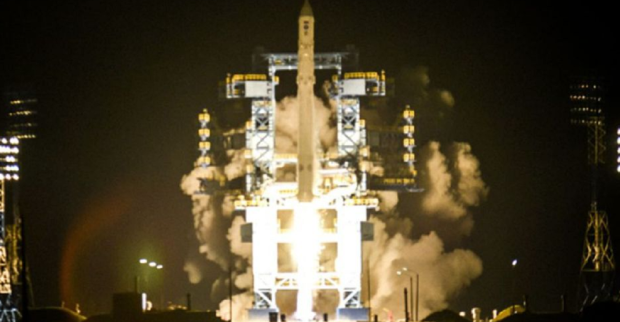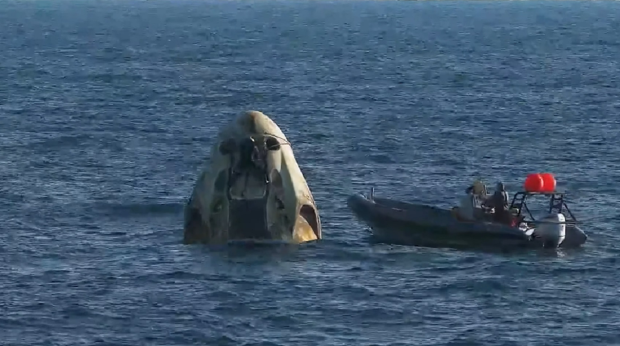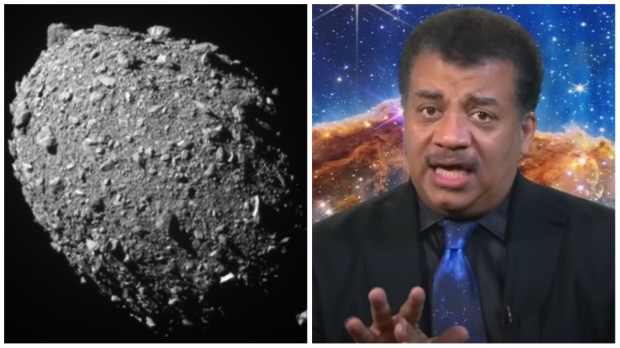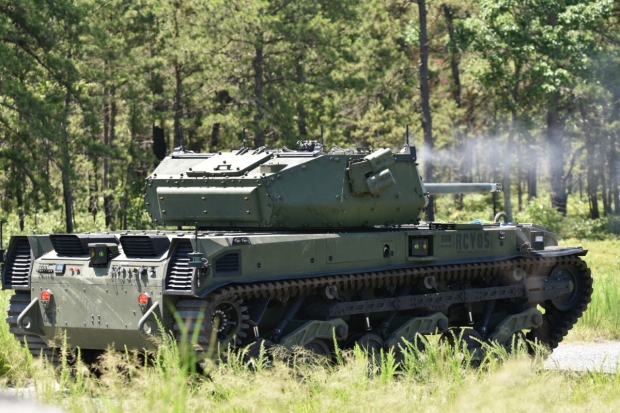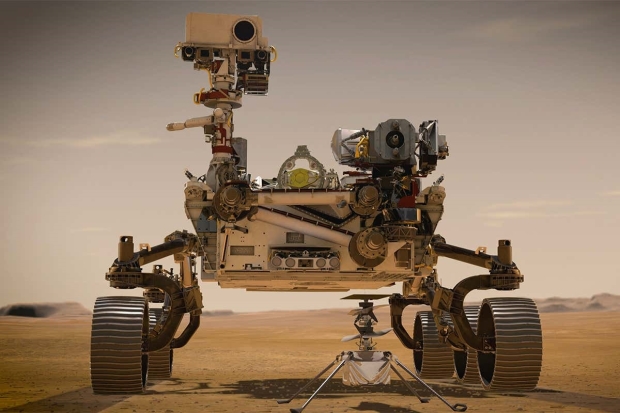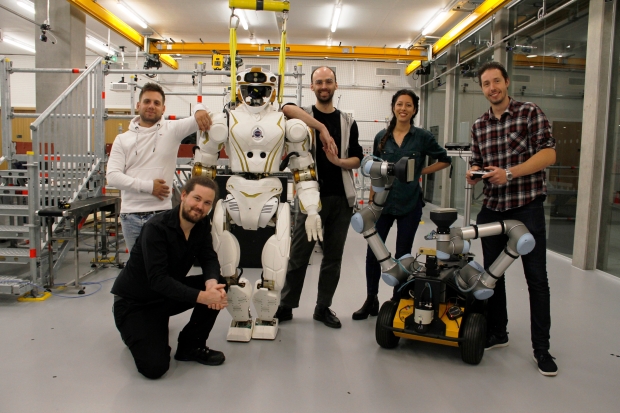Science, Space, Health & Robotics News - Page 78
Russia launches mysterious small military satellite into Earth's orbit
Russia announced its launch of a small military satellite on Saturday, October 15, which will be controlled by Russia's Ministry of Defense.
Roscosmos, Russia's space agency, which is the equivalent of NASA, took to Telegram to announce that an Angara rocket launched from Plesetsk Cosmodrome in northwestern Russia Saturday at 3:55 p.m. The rocket was carrying a small satellite that the agency is calling EMKA-3, which was assigned the serial number Kosmos-2560. According to reports, the satellite is estimated to be approximately 330-pounds and is on its way to a sun-synchronous orbit of approximately 190 miles above Earth.
EverydayAstronaut has reported that not much is known about the EMKA series of satellites, with rumors indicating that they are optical reconnaissance spacecraft. However, that has hardly been confirmed by Roscosmos or Russia's Ministry of Defense, and it's likely to stay that way. Notably, Russia has now launched three of these EMKA satellites, the first was launched in 2018 but eventually fell back to Earth. Russia followed up by launching two more in September 2021 and April 2022. However, both of those reportedly fell back to Earth after a month of service.
Continue reading: Russia launches mysterious small military satellite into Earth's orbit (full post)
SpaceX Crew-4 makes safe return to Earth after a six month mission
Elon Musk's SpaceX has conducted yet another safe transportation of International Space Station astronauts back down to Earth.
NASA's SpaceX Crew-4 astronaut climbed aboard the Dragon spacecraft and safely touched back down on Earth last Friday, landing safely off the coast of Jacksonville, Florida. NASA astronauts Bob Hines, Kjell Lindgren, and Jessica Watkins, as well as ESA (European Space Agency) astronaut Samantha Cristoforetti, wrapped up their nearly six-month stay aboard the ISS on October 12 when they climbed aboard SpaceX's Dragon spacecraft.
The spacecraft successfully deployed its parachutes throughout its descent and splashed down in the ocean at 4:55 p.m. EDT. During the astronauts' time on the ISS, they traveled 72,168,935 miles, completing 170 days aboard the floating laboratory and 2,720 orbits around Earth. During their mission on the ISS, the astronauts completed various scientific and maintenance tests as well as technology demonstrations, some of which they brought back to Earth for further analysis.
Continue reading: SpaceX Crew-4 makes safe return to Earth after a six month mission (full post)
Neil deGrasse Tyson explains NASA's big asteroid-shifting DART mission
NASA announced on September 27 that it had successfully collided a small spacecraft into a distant asteroid in the world's first planetary defense mission.
The success of the Double Asteroid Redirection Test (DART) marked the world's very first planetary defense mission, where the orbit of a planetary object was successfully altered, meaning Earth basically proved it has the capabilities of changing the orbit of distant objects. Famed astrophysicist and author Neil deGrasse Tyson appeared on PBS NewsHour to discuss the mission and the implications of its success.
Tyson said that humans have known about the risk of asteroids for many years and that he is surprised that a mission such as DART has taken so long to happen, considering the overall risks asteroids pose toward Earth. However, Tyson says, "better late than never", and went on to explain that the DART team selected a small 500-foot-wide asteroid that orbits a larger asteroid, hence its definition of a moonlet. The smaller asteroid named Dimorphos has a very well-understood orbit, and after the DART collision, astronomers are able to check how much of that orbit has changed based on the impact.
Continue reading: Neil deGrasse Tyson explains NASA's big asteroid-shifting DART mission (full post)
Here's how many near-Earth asteroids have been found so far
The very first near-Earth asteroid was discovered in the 1800s, and since then, astronomers have been scouring the skies for more.
Over the course of many years, astronomers have continuously found more and more near-Earth asteroids, with researchers reaching a milestone number of more than 30,000 near-Earth asteroids only recently. As equipment increases in quality and accuracy, astronomers are exponentially finding more asteroids. To illustrate this, more than 15,000 near-Earth asteroids were discovered in just the past 10 years. So, are any of these dangerous?
Scientists believe that they have found all asteroids that would cause an extinction-level event if they impact Earth. These asteroids are considered to be "large" near-Earth asteroids (NEA), which means their orbit comes within 120,842,549 miles of the Sun, and their diameter is slightly larger than 1 mile. Researchers report that all of the asteroids of this caliber have already been discovered and that none as expected to hit Earth for at least the next 100 years.
Continue reading: Here's how many near-Earth asteroids have been found so far (full post)
NASA says the Sun has erupted 8 solar flares and 23 blasts in 1 week
NASA has taken to its Sun & Space social media account to announce that the Sun has erupted eight solar flares and twenty-three solar flares.
NASA has posted to its Sun & Space Twitter account to announce a space weather roundup for the past week. According to the announcement, the Sun has released a total of eight solar flares and twenty-three coronal magnetic ejections over the course of the week. Above is a NASA video that showcases various active regions on the Sun that can be seen in the brighter areas of our star. Notably, there were no geomagnetic storms to report despite the Sun's increasing activity.
The space agency explains that at 2:30 in the video, you can see NASA's Solar Dynamics Observatory (SDO) make calibration maneuvers, which is an important process that only happens twice a year. The calibration maneuvers ensure the spacecraft's instruments are taking in the light from the Sun accurately, while also assessing how that light is being received by the spacecraft.
Continue reading: NASA says the Sun has erupted 8 solar flares and 23 blasts in 1 week (full post)
Elon Musk says his recent post is a conspiracy theorists 'wet dream'
Shortly after Russia began its invasion of Ukraine, SpaceX CEO Elon Musk announced that his company would provide Starlink satellite constellations to the country so Ukrainians could stay connected to the internet and maintain vital communication channels.
SpaceX provided the Starlink constellations back in February, and since then, SpaceX says it has been fronting the majority of the bill to keep connectivity maintained. However, a CNN report revealed that SpaceX sent a letter to the Pentagon saying that it was no longer in a position to further donate terminals to Ukraine or fund the existing terminals for an undetermined amount of time.
The letter sent to the Pentagon by SpaceX claims that it would cost SpaceX nearly $400 million over the next year to maintain Starlink at its current level. Following the exclusive report from CNN, Musk took to his personal Twitter account to echo much of the same points of view as outlined in SpaceX's letter to the Pentagon, but the SpaceX CEO gave in, saying that his private company will continue to support the Ukrainian government "for free".
Continue reading: Elon Musk says his recent post is a conspiracy theorists 'wet dream' (full post)
US Army's professional association conference features armed robots
The recent Association of the United States Army (AUSA) conference featured a number of armed robots and similar technologies on display.
At the conference, one of the companies that garnered significant attention was German company Rheinmetall, which launched its hybrid and electric drivetrain vehicle, the Mission Master-CXT. The model is a mid-sized unmanned vehicle that can shuttle weapons - and autonomously identify targets and launch strikes.
Here is what Alain Tremblay, VP of business development and innovation, said in a statement published by Defense One:
Continue reading: US Army's professional association conference features armed robots (full post)
NASA's rover gets hit with curve ball while taking a sample from Mars
NASA's Perseverance rover is currently exploring the surface of Mars, collecting samples that will eventually be sent back to Earth.
Perseverance, accompanied by its scout helicopter named Ingenuity, are scouring the surface of the Red Planet for viable locations to sample, and so far, the rover has collected fourteen samples that are stored within the vehicle. On October 5, NASA announced that Perseverance successfully collected its thirteenth sample, which was described as "fine-grained". Notably, NASA stated that it planned on collecting an additional sample from the same area.
On October 12, NASA took to the Perseverance Twitter account, where it announced that the fourteenth sample had been collected, but the rover encountered an issue when attempting to seal and store it. NASA explained that the rover was unable to seal the sample tube, but the sample itself remained safe within Perseverance's caching assembly. NASA added that Perseverance's team was currently working on a fix for this issue, and as of October 15, there hasn't been an update.
Continue reading: NASA's rover gets hit with curve ball while taking a sample from Mars (full post)
800,000 living brain cells successfully taught to play a video game
Researchers have proven for the first time that cells living in a petri dish can be taught how to play a simple game, like Pong.
A newly published study in the scientific journal Neuron details a group of researchers that took 800,000 mouse and human brain cells, placing them in a petri dish that they named DishBrain. The team was able to grow the cells by placing them on top of a microelectrode arrays, which stimulated the cells and also read their activity. Through this technology, the team was able to teach the cells to be able to perform goal-directed tasks and in this instance, to successfully teach the group of cells to play the classic computer game, Pong.
Using the microelectrode arrays and close up monitoring of the cells activity, the scientists were able to inform the cells on where the Pong ball was located and how to move the paddle up and down to deflect the incoming ball. The researchers explain that this new capacity to be able to teach cells to perform tasks and have those tasked represented in a virtual environment hasn't been achieved before.
Continue reading: 800,000 living brain cells successfully taught to play a video game (full post)
Touchlab testing its robotic skin sensors in hospitals
Robots are able to conduct a lot of tasks more efficiently than their human counterparts, but activities that require fine motor skill were once out of grasp - but researchers are moving in the right direction. Touchlab aims to give robots the ability to use custom grippers that give robots tacticity and the ability to manipulate objects in a more precise manner.
Robots might be ideal for some factory automation, but tasks that require honed motor skills remain extremely challenging to figure out. Touchlab hopes its electronic skin will give doctors full immersion with its full-body Telerobot technology - even if a medical specialist is working remotely.
The electronic skin is thinner than the skin covering our bodies, with the ability to withstand severe temperature changes. The robot makes use of sensors and custom software so they'll have better dexterity when handling objects.
Continue reading: Touchlab testing its robotic skin sensors in hospitals (full post)


